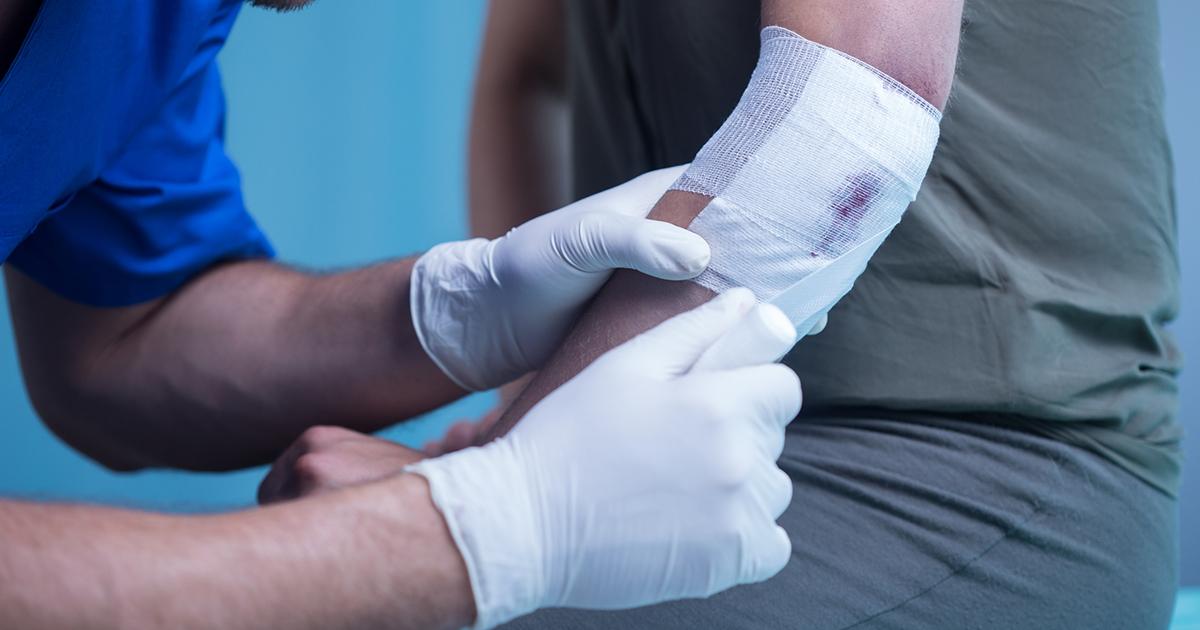Symptoms Of Congenital Insensitivity To Pain
At first glance, individuals with congenital insensitivity to pain with anhidrosis (CIPA) may seem quite lucky. With no pain sensation, the aches and pains that accompany accidents, medical procedures and aging simply wouldn't exist. A life free of pain is actually quite dangerous, however. Pain is your body's way of telling you something is wrong. Without it, you can suffer a severe injury or illness without recognizing a problem. The condition is particularly dangerous in young children who don't know when something is wrong without pain to tell them. There are a few vital symptoms of CIPA you should be aware of, especially if you suspect your newborn may have this condition.
Accumulation Of Wounds And Injuries

A lack of the ability to feel pain usually leads to a large accumulation of wounds and injuries. Cuts, scrapes, sores, and bruises are common in individuals with congenital insensitivity to pain. You need to stub your toe badly on the coffee table only once, for example, before you move the table or exercise more caution when walking around it. Individuals with CIPA, however, may bounce their toe off the table repeatedly and not notice. As a result, they may suffer multiple toe injuries or simply aggravate their existing wound repeatedly and prevent it from healing. Similar events may occur all over the body, leaving behind a collection of wounds and scars.
Keep reading to learn about another significant CIPA symptom.
Loss Of The Ability To Smell

Medically known as anosmia, individuals with CIPA have no sense of smell. Although pain and smell are two very different sensations, the brain uses the same information channels to receive pain signals and odors. The mutations caused by CIPA block the path pain signals use to reach the brain. Since the nose uses these same damaged channels to send signals to the brain, CIPA results in the loss of the ability to smell. This may not seem like a major medical issue, but the ability to smell leaking gas or smoke can prove important since these scents can be signs of imminent danger. Infected wounds also produce unpleasant smells individuals with CIPA may miss.
Get ready for the most iconic symptom of congenital insensitivity to pain.
Unable To Feel Physical Pain

Individuals with CIPA just don't feel pain, even when it's in their best interest to do so. Someone suffering from CIPA can place their hand on a hot stove burner and not know they're getting burnt. CIPA patients frequently bite their tongue, cheeks, and lips unknowingly. Infants and small children with CIPA can seriously injure or even amputate their tongues and fingers by biting through them. Children can burn their mouth, throat, and esophagus by eating hot food or scratch their eyes by rubbing them too hard. These types of injuries are common in individuals unable to feel physical pain. A lack of the ability to feel pain is particularly dangerous in infants who are are too young to understand what actions can cause harm.
Get to know more CIPA symptoms by reading more now.
Decreased Or Lack Of Sweating

No one enjoys the sensation or the odors that accompany getting sweaty on a hot summer day, but your sweat serves a purpose. Sweat helps cool the body and regulate temperature so individuals don't overheat and damage the body. Individuals with CIPA, however, often experience anhydrosis, which is the medical term for decreased or lack of sweating. The inability to sweat increases an individual's odds of suffering heat exhaustion and heat stroke. Although rare, the inability to cool the body can result in a fever of 108 degrees Fahrenheit or more, at which point the brain and other internal organs can suffer permanent damage. Patients with CIPA must be mindful of both hot and cold temperature extremes.
Keep reading to get to know another symptom of congenital insensitivity to pain.
Bone Deformities Due To Past Fractures

Sometimes broken bones are obvious, and individuals may hear the bone break or easily observe an arm or leg bending in a way it's not supposed to. However, other breaks can be more discrete. You may simply fracture a bone or suffer a break in a less obvious place like a rib or your tailbone. These breaks and fractures get diagnosed using an x-ray when you go to the doctor complaining of pain. Individuals with CIPA don't feel this pain and so often suffer bone breaks and fractures unknowingly. Without medical treatment, these fractured bones may heal on their own but do so improperly or in the wrong position. As a result, patients with CIPA often have bone deformities due to past fractures. Some are visible only on an x-ray while others cause more noticeable deformities.